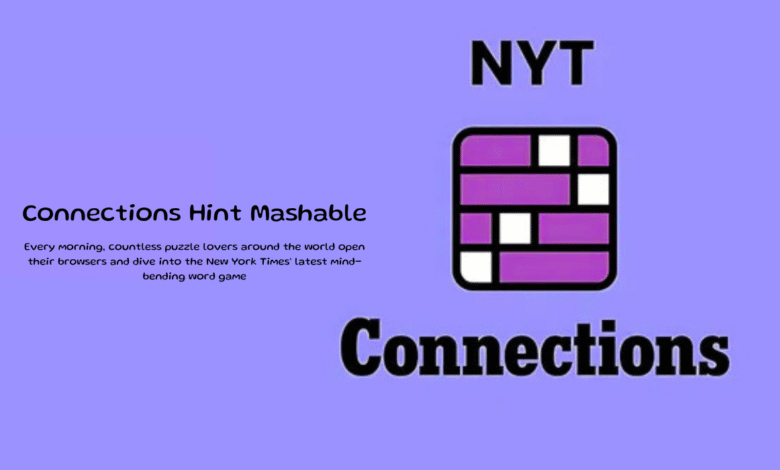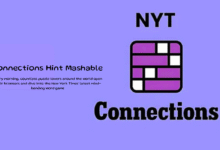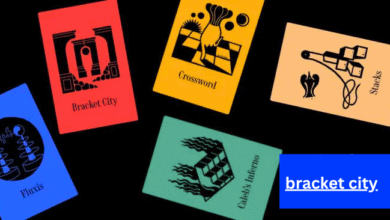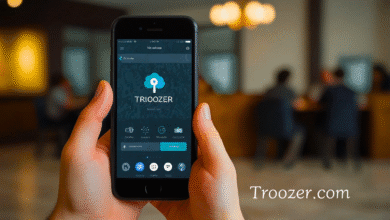Connections Hint Mashable The Inspiring Power Guide That Makes Solving NYT Puzzles Effortless

Every morning, countless puzzle lovers around the world open their browsers and dive into the New York Times’ latest mind-bending word game — Connections. It’s a puzzle that has quietly evolved into a daily ritual, blending logic, pattern recognition, and language intuition. Yet, as clever as it is, it can be brutally challenging. That’s where Connections Hint Mashable comes in. More than just a guide, it’s become a reliable companion — a kind of thoughtful friend who gives you just enough of a clue to keep the magic alive without stealing your satisfaction. Mashable’s daily hints for the NYT Connections puzzle have gained enormous popularity because they strike the perfect balance between challenge and guidance. Understanding what these hints are, how they work, and why they’ve become essential for so many players reveals not just a gaming phenomenon but a cultural shift in how we engage with online puzzles.
What is Connections Hint Mashable?
“Connections Hint Mashable” refers to the daily section published by Mashable that provides gentle, tiered hints for the New York Times Connections puzzle. Each day, players face a grid of sixteen words and must organize them into four groups of four based on shared themes. Sounds easy — until you realize that many of the words seem to overlap categories, or that one theme might involve puns, pop culture references, or double meanings. Mashable’s hints help steer players toward the right line of thought without outright giving away the answers.
Instead of spoiling the solution, the writers behind the hints craft small nudges: “These might be words you’d find on a menu,” or “Think of sounds animals make.” It’s this subtlety that’s made the feature so beloved. The hints feel like they’re written by someone who understands the joy of solving rather than by someone just revealing an answer. The tone is conversational, lightly teasing, and patient — a tone that reflects the site’s broader commitment to approachable digital culture coverage.
The Origins of the Game and Why Hints Matter
The Connections puzzle was introduced by the New York Times as part of its growing suite of daily logic and word games, following the massive success of Wordle. Created by puzzle editor Wyna Liu, it was designed to test associative reasoning rather than vocabulary alone. Each puzzle presents sixteen words that could theoretically relate to multiple ideas, forcing players to sift through possibilities until four solid themes emerge. The game resets every day at midnight, creating a rhythm much like the old-fashioned crossword habit of past generations.
However, as the puzzle gained popularity, players realized it could be deceptively hard. Many would get stuck after one or two groups, staring blankly at a handful of leftover words that refused to make sense together. Rather than giving up, players began searching for help — but they didn’t want spoilers. They wanted hints that respected the puzzle’s spirit. Mashable responded by introducing its Connections Hint column, structured to offer small steps of help — from light suggestions to near-reveals. That measured guidance has become one of the keys to the game’s sustained popularity.
Connections Hint Mashable – Bio Table
| Attribute | Details |
|---|---|
| Name | Connections Hint Mashable |
| Type | Daily hint guide / article for NYT Connections puzzle |
| Purpose | Provides tiered, spoiler-free hints to help players solve the puzzle |
| Publisher | Mashable |
| Audience | NYT Connections players of all skill levels |
| Content Style | Conversational, playful, informative, with subtle nudges |
| Availability | Published daily alongside the NYT Connections puzzle |
| Benefits | Reduces frustration, improves pattern recognition, enhances enjoyment |
| Tone | Empathetic, supportive, lightly humorous |
| Access | Free on Mashable website |
How Mashable’s Hints Are Structured
Each day’s article usually starts with a warm, conversational introduction that acknowledges the struggle — “Was today’s purple group brutal?” — before gently leading readers into the hints. The structure follows a predictable but comforting rhythm. First, there’s a general overview of the puzzle’s theme or tone for the day — for instance, whether it’s a wordplay-heavy set or more straightforward. Then come four distinct hints, one for each color category: yellow, green, blue, and purple. The yellow group is the easiest, often concrete (like “breakfast foods” or “musical instruments”), while the purple one is the hardest, often abstract (“words that can precede ‘light’,” or “homophones for animal names”).
Mashable’s team takes care to reveal information in escalating degrees. The first hint might simply describe a feeling — “Think of something you might wear.” If you scroll further, you might find a slightly stronger clue — “These are all accessories.” And finally, for those who truly can’t resist, the answers are often listed at the very end of the article, hidden below a spoiler warning. This tiered approach makes the hints flexible for every type of player: the ones who need a nudge, the ones who need a push, and the ones who just need closure.
Why Players Love the Hints
The appeal of Connections Hint Mashable lies in the way it respects the player. It doesn’t talk down, and it doesn’t ruin the fun. Instead, it offers guidance with empathy. When you’re stuck on a group and feel that creeping frustration, the hint becomes a friendly hand that says, “You’re close — keep going.” That emotional dimension is why so many puzzle-solvers bookmark the page daily.
There’s also a psychological factor. Word games, at their core, trigger the brain’s reward system through small moments of recognition. When you finally connect four words after reading a clever hint, you feel a rush of satisfaction that’s earned, not handed to you. This balance — the space between failure and insight — is exactly where Mashable’s hints thrive.
Moreover, Mashable’s editorial tone adds personality. The writers occasionally inject humor, cultural references, or mini pep-talks (“Don’t let that blue group get you down”). It feels like reading advice from a witty friend rather than an instruction manual. That’s a big part of why readers trust Mashable as their daily puzzle companion.
Benefits Beyond the Puzzle
Using Mashable’s hints isn’t just about winning the game faster — it actually helps train your brain. Over time, frequent players notice they develop sharper pattern recognition, improved vocabulary flexibility, and a deeper sense of linguistic intuition. The hints expose you to the hidden logic behind word associations — a kind of invisible grammar of how words and ideas cluster together in English.
For many people, playing Connections has become a small daily mindfulness practice. It’s ten minutes of quiet concentration before work or during a coffee break. The hints enhance that ritual — not as a shortcut, but as a learning aid. Players often reflect on how they begin seeing patterns in everyday life: categories, overlaps, hidden meanings. This kind of playful cognitive stretching is exactly what modern digital media rarely provides, which makes Mashable’s role even more valuable.

The Culture Around the Game
In a digital world dominated by scrolling and passive content, the rise of puzzles like Connections and the popularity of hint columns represent something refreshing — active engagement. There’s a small but passionate culture forming around it. Social media platforms like X (formerly Twitter) and Reddit now host daily “Connections threads,” where users compare notes, discuss tricky word traps, and even rate how difficult each day’s purple group was. Mashable’s hint page has become a gathering point for that community. Players often share the article link and discuss how they interpreted a hint differently — a modern kind of collaborative puzzle-solving.
This community aspect adds another layer of appeal. The hints become conversation starters, not just answers. It’s a space where language lovers, teachers, and casual gamers meet on equal ground, all bonded by that shared morning ritual of matching words and discovering meaning.
Strategies and Smart Use of the Hints
The best way to use Connections Hint Mashable is to treat it as a supportive coach, not a crutch. Start each puzzle cold — try to make one or two groups yourself. When you reach an impasse, glance at the first-tier hints only. If you still can’t break through, move to the deeper hints. Reserve the full answers for the very end, or you’ll rob yourself of the satisfaction that makes the game worth playing. Over time, you’ll find that you rely on the hints less, which is a sign your brain is adapting.
Many skilled players also recommend keeping mental notes of tricky word types — synonyms, homophones, and compound phrases — that tend to appear frequently. When you pair this strategy with Mashable’s gradual hint style, you start to notice patterns much earlier in the puzzle, improving both your accuracy and speed.
A Human Touch Behind the Hints
What makes these hints feel so personal is that they’re clearly written by real editors and puzzle enthusiasts who understand both language and emotion. There’s warmth and humor in the phrasing, an acknowledgment of shared struggle, and a genuine desire to help you learn. Unlike automated hint generators, Mashable’s content carries a tone of professional friendliness — a blend of journalism and playfulness. That’s why the series feels trustworthy.
Conclusion
Connections Hint Mashable has evolved into more than a help column; it’s become a daily ritual for countless fans of the New York Times’ most thought-provoking puzzle. It’s a reflection of what people crave in digital culture — challenge balanced with support, logic intertwined with joy. In an age where algorithms often spoon-feed answers instantly, this slow, mindful way of problem-solving feels almost rebellious.
So the next time you open your NYT Connections grid and stare at sixteen words that refuse to fit together, don’t rush to give up. Take a breath, scroll through Mashable’s hints, and let that small spark of understanding guide you. You’ll find that the true pleasure of the game isn’t just in finishing — it’s in discovering the patterns hiding behind words, one gentle nudge at a time.
FAQs
1. What is Connections Hint Mashable?
Connections Hint Mashable is a daily guide published by Mashable that provides subtle hints for the New York Times Connections puzzle. It helps players solve the puzzle without giving away the full answers.
2. How do the hints work?
The hints are tiered, starting with broad clues for each group and gradually giving more specific guidance if needed. This allows players to solve at their own pace while preserving the challenge.
3. Are the hints spoilers?
No, Mashable’s hints are designed to be spoiler-free initially, giving gentle nudges rather than revealing the full solution. Full answers are usually hidden at the end for optional reference.
4. Who can use Connections Hint Mashable?
Any player of the NYT Connections puzzle can use the hints, from beginners to experienced solvers looking for guidance. They are especially helpful for tricky or abstract word groups.
5. Why are the hints so popular?
The hints are popular because they respect the puzzle’s challenge, improve pattern recognition skills, and make solving the daily puzzle more enjoyable.





